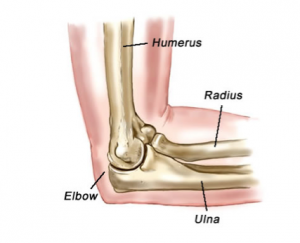Is Fibromyalgia Pain Different From Persistent Discomfort?
Dealing With Persistent Pain.
The abnormalities seen in this anxiety axis, which controls our responses to stress and anxiety, injury, and https://b3.zcubes.com/v.aspx?mid=5147126&title=persistent-discomfort-monitoring-as-well-as-treatment injury, may explain why particular individuals experience discomfort differently. Some people with real uncomfortable health problems are addicted to mind-altering substances. Generally, the dosage of opioids is gotten to by the individual telling the physician exactly how they are doing with the discomfort and by joining their activities of daily living. A persistent discomfort person who is not addicted to medication will tell the physician the fact concerning his or her ability to operate and do what needs to be performed in daily life. Strong opioid medications are slightly different hereof, as Click to find out more well as this is privileged for people who deal with severe discomfort.
Therapy for individuals with RSD incorporates a multidisciplinary technique with step-by-step consolidation of physiotherapeutic, pharmacotherapeutic, as well as psychotherapeutic techniques. One of the most essential component is an extensive physical treatment program. • Stimulation techniques for persistent discomfort control include deep mind excitement, electric motor cortex stimulation, spine stimulation, as well as outer nerve stimulation. The indications for and outcomes of these techniques are different.
Signs.
Additionally, the discomfort can prompt the person to see a doctor. Chronic pain is discomfort that persists gradually as well as commonly arises from long-lasting medical problems or damages to the body. Some persistent discomfort centers have a more powerful emphasis on intrusive therapy, such as shots and also surgeries, than others. Look for a facility that uses you a choice of noninvasive treatments, including cognitive-behavioral treatment. Before having an intrusive discomfort treatment, ask your medical professional about his/her experience keeping that treatment.
Isometric conditioning, stress and anxiety loading, as well as general aerobic conditioning are consisted of in the next phase of therapy. Psychological administration might be required throughout the treatment training course. Pharmacotherapy is recommended if pain is the restricting aspect for the development of therapy, but it is taken into consideration adjunctive to treatment.
As a result, this article is not merely splitting hairs over option of words-- ailment or condition. Instead, I recommend that the confusion of the IOM and AAPM on terms shows a basic misconception of how to approach people of all types.
- Sometimes pain ends up being persistent since the underlying problem does not recover.
- Unfortunately, chronic pain might additionally happen despite recovery and without any apparent injury to tissues.
- When any kind of kind of discomfort lasts a long period of time there can be adjustments in the spine Helpful resources and also the mind that change just how we perceive uncomfortable feelings.
- These modifications might lead to extreme discomfort with little or no excruciating stimulus.
- As an example, joint inflammation triggers long term swelling and also damage to the joints, as well as it may injure as long as the inflammation lasts.
This searching for suggests we can boost the mind's crucial chemical carrier, glutamate, to improve linked psychological health problems in individuals with persistent discomfort," stated Partner Teacher Gustin. " The research reveals people with persistent discomfort experience disturbances in the interaction in between mind cells. This could cause a modification in character through a reduction of their ability to efficiently refine emotions.
Concerning 25% of individuals with persistent pain will certainly take place to have a problem called chronic discomfort disorder. That's when individuals have signs and symptoms beyond pain alone, like clinical depression and anxiety, which hinder their every day lives.

Lower Stress In Your Life Tension Increases Chronic Pain.

Can chronic pain be managed?
Although no single cure is available for chronic pain, there are many ways to treat and manage it. The first step should be to treat any underlying conditions that may cause pain. These treatment methods will vary according to the specific disease or medical condition.
Various sorts of medicines aid people that have different types of pain. If your physician advises a non-prescription painkiller, check out as well as adhere to the guidelines on package. Your doctor typically will suggest long-acting medications for constant pain.
Is chronic pain syndrome a mental illness?
This and much other research demonstrate that severe and disabling chronic pain is a symptom associated with serious psychosocial distress, often a major mental disorder such as clinical depression. Indeed, some research indicates that depression itself accounts for the secondary brain changes described above.
